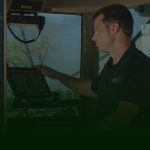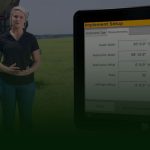Water Management – Basic Operation

Length
44m 24sLevel
Intermediate
About This Tutorial
Effective water management is a critical component of success in agriculture, but water can be an unreliable resource in the already unpredictable business of farming. Leveling, smoothing, and shaping the field surface is a process that ensures that the depths and discharge variations over the field are relatively uniform and, as a result, that water distributions in the root zone are also uniform. Land leveling always improves the efficiency of water, labor, and energy. It is as important to effective surface irrigation as any other single management practice. In this tutorial, Ag Technologies founder Brian Kelly shows you how field design and land leveling can help you reduce your water usage and increase your yields by making every acre more water efficient.
WHAT YOU’LL LEARN:
Fundamentals of Water Management
Ag Technologies owner and founder Brian Kelley talks you through the basics of optimum water management to help you reduce erosion, open up more farmable acres, and increase crop yields, while also reducing water usage. You may be familiar with using laser-based systems to identify problem areas and create solutions, but do you know the ins and outs of using RTK-corrected GPS systems? Learn about the advantages of using GPS systems to give you the best design solution to your specific problem in the shortest amount of time.
Benchmarks, Base Stations, and the Basics of Moving Dirt
When you start any dirt moving project, you must first establish a master benchmark, the starting point and origin of a grid that is used for defining and surveying a field. All equipment must use this benchmark to ensure proper calibration from the same sub-inch accurate starting point. Brian Kelley shows you how to set up a mobile RTK base station, a localized corrective source that provides sub-inch accuracy for your survey and design. Learn how to choose the best location for your benchmark for both long-term and short-term projects.
Creating a Survey Using WM Survey System
Why do you need to do a survey? The purpose of a survey is to get an accurate representation of the existing surface of the area to be leveled so that you can start creating your field design. Brian Kelley walks you through the steps to manually adjust your shot spacing to collect the data you need and points out the field conditions that need to be taken into consideration. Learn how to conduct both a boundary survey and an interior survey to get a true representation of the field’s surface.
Creating a Field Design
You can create a field design using WM Survery in two ways: either in the cab or remotely on a desktop computer. Brian Kelley explains the benefits of both processes and demonstrates each one. Step-by-step instruction on the screen explains and simplifies the process of field design, from basic flat-plane designs to more complex multi-plane and smoothing designs. Learn the different ways to achieve the ultimate goal of moving the least amount of dirt possible to complete proper surface drainage.
Implementing Your Field Design
Once your field design is completed, it’s time to put it into action. Don’t be intimidated by the technology. Brian Kelly makes it easy, taking you step-by-step through the process of importing and configuring your design on your display in order to implement your field design set-up. Once this is done, you can begin making your design a reality!
Interview with Ken Lodge
Brian Kelley chats with 40-year water management industry veteran Ken Lodge about the history of water management and his years of involvement. Lodge started in laser leveling and has followed the evolution of the technology in both construction and agriculture. While the technology, delivery, and distribution of laser technology has changed, the basics of how lasers work is fundamentally the same. Through his years of experience and work across the country, Lodge gives great insight into the best water management practices in use today and for the future.






Leave a Reply